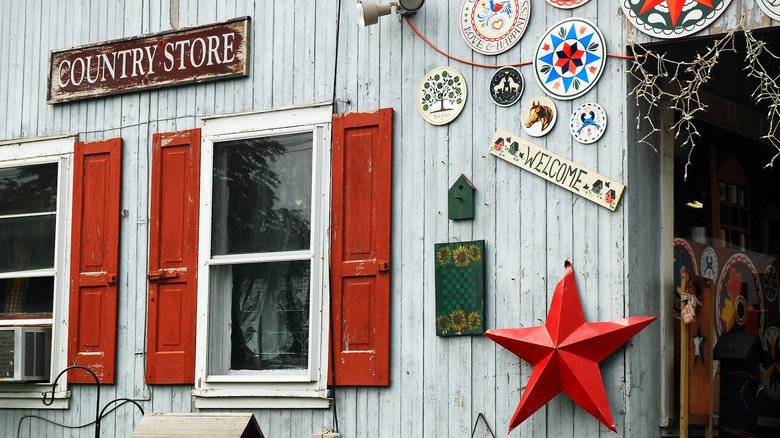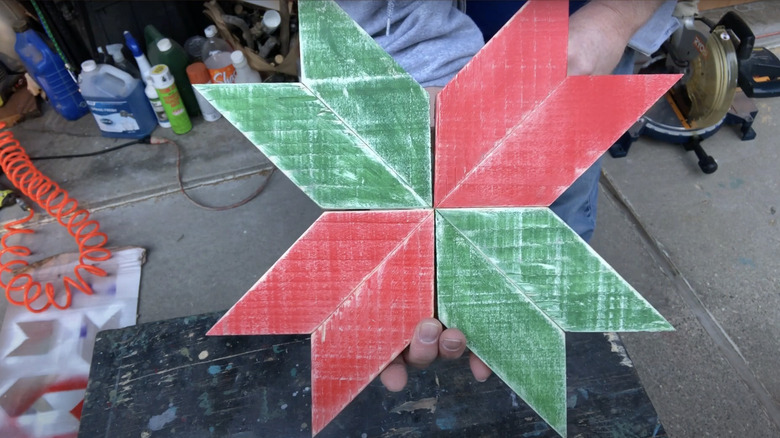If You See A Star On The Outside Of Someone's Home, This Is What It Means
Have you ever noticed a star adorning the exterior of a house and wondered about its significance? These stars are seldom the same, often seen in various colors, sizes, and materials — they are not just decorative elements; they carry a wealth of history and meaning. This article delves into the symbolism and origin of these stars, providing insights into this intriguing tradition.
The most common form of these stars is the barn star, also known as a hex sign. It originated between the 18th and 19th centuries in the United States, particularly among the German-American farming communities in Pennsylvania. Initially, these stars were painted directly onto barns for their aesthetic appeal and were later handcrafted from metal or wood. The Pennsylvania Dutch, including the Amish, Mennonite, and Lutheran communities, were among the first to popularize barn stars.
Barn stars were believed to bring good luck and ward off evil spirits, like hanging a horseshoe over a door. Historically, the star symbol has been used in various cultures, signifying protection, guidance, and good fortune. This integration of the star symbol into the cultural fabric of rural American communities showcases a fascinating blend of aesthetics, symbolism, and cultural identity. In all of its forms and meanings, the barn star became an iconic emblem in both America and Canada, as well — a reflection of personal and communal values deeply rooted in the traditions and beliefs of those who first popularized them.
The barn star's aesthetic appeal and historical trends
Today, the star symbol has transcended its initial rural agricultural associations. It can be found on homes in both rural and urban North America, serving as a decorative element that nods to its historical and symbolic roots. The aesthetic appeal of these stars is undeniable. It has become a part of Americana. They add a rustic or country charm to homes, fitting with various architectural styles. The star's simplicity and boldness can complement modern and traditional exteriors.
Furthermore, the uniqueness and meaning of each barn star can vary based on color. Painted in every imaginable hue, from violet to yellow, orange, etc., each colored star carries its meaning. For example, a black star might symbolize protection, while a red star could represent emotions or passion. However, the symbolism doesn't end there — multiple colors, patterns, shapes, and the number of points on the star also serve as important indicators of what each star represents.
The famous five-pointed star is traditionally good luck, but what about others? Well, more points may signify something religious or cosmological. For instance, a seven-pointed star can symbolize the biblical days of creation or the seven visible planets of ancient times, which influenced the naming of the days. Conversely, twelve points may represent the Apostles or something more astrological, like the twelve zodiac signs. It depends. Look around, use your intuition, and see if you can feel what that barn star may symbolize.
Barn star's DIY popularity and where to buy
As you explore the meanings behind these stars, you might also be inspired to create your own. The barn star has become a beloved project among DIY home decor enthusiasts, valued for its straightforward design and adaptability. People specializing in woodworking might create a carved wooden star, or those who enjoy metalworking could fashion a star from sheet metal. At the same time, those less experienced can work with cardboard. DIY folks can completely personalize their barn star, selecting colors and designs that reflect their style or home's aesthetic while adding a personal touch to this traditional symbol.
If you're not of the DIY type, that's okay; plenty of retailers could have just the barn star you're looking for. There are several options on boutique websites, or you can create your custom barn star with a craftsperson and get the best of both DIY and shopping worlds on sites like Etsy.
It's clear that the humble barn star is more than a quaint relic; it's a living emblem of cultural heritage and creativity. Its journey from the barns of Pennsylvania Dutch farmers to the diverse facades of North American homes is a testament to its everlasting appeal. The next time you see one of these stars, remember that it's not just a decoration — it's a story, a piece of history, and a little bit of magic hanging right there on the wall.


